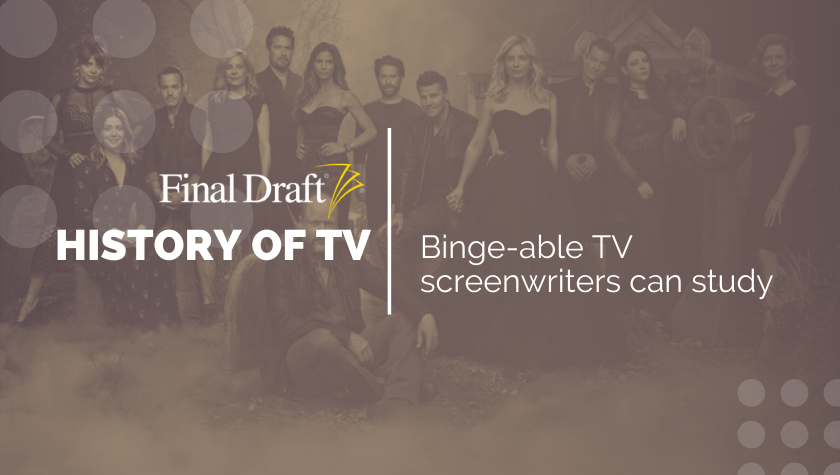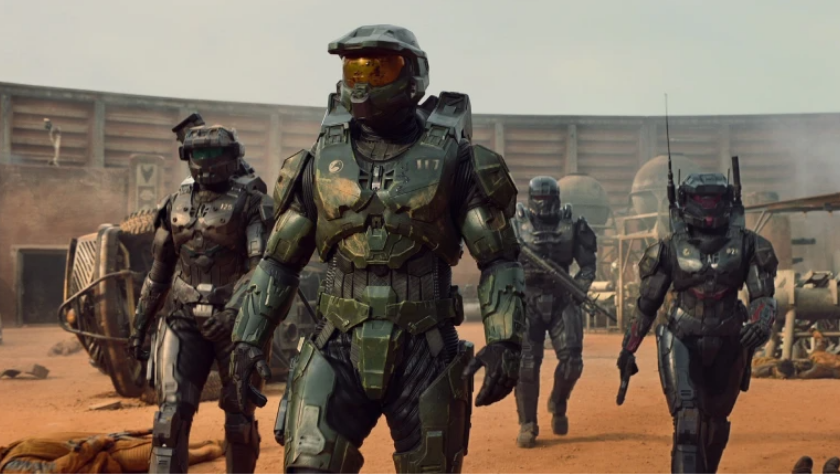Halo' is a masterclass for TV genre writers
June 2, 2022
Paramount+ has introduced its TV adaptation of Xbox's Halo to an entirely new audience while hoping to enhance the expansive world for its longtime gamer fans.
Therein lies part of what makes Halo such a fantastic study for screenwriters: the built-in mythology spanning the video game's 20-year existence that also transcends into novels and comic books. This gives Halo the series a galaxy’s worth of rich characters, lessons in world-building, and a story engine to mine from. The series adaptation is a masterclass in layering in backstory thanks to showrunner Steven Kane, along with creative support from Kyle Killen’s original series concept and executive producer Kiki Wolfkill.
But having backstory isn’t enough, especially when that backstory is largely devoted to a world that gamers have already immersed themselves in before watching on their screens. For this reason, the show takes its time with its character development, as well as generating enough plot to span beyond season one - a significant feat considering Halo’s epic scope.
From Pilot to Finale: The arc within Halo
Season one feels more like a nine-part movie than a traditional network show, which is a structure we see more and more from streamers banking on bingers hitting “next episode.” But how do you create a throughline capable of spanning roughly nine hours of television while also giving each episode a satisfying conclusion? It’s a daunting responsibility for any writers room and executed deftly with Kane at the head of the table.
Halo features several mini-story arcs within the larger narrative that seamlessly play into the world-building. It can be tricky for a screenwriter to pick and choose from two decades of material to work with, narrowing it down to which story to tell in just one season. But the answer rings crystal clear across good storytelling: focus on character.
The humans under the helmets
“Character-driven” pretty much defines the Halo series so far. One of the leading factors in making the show so divisive in its fan base is the lead himself: Master Chief Petty Officer John-117 (played by Pablo Schreiber). While in the game, we’re him. Here, we see him.
In a recent interview with Final Draft, Kane expanded on how he took the game’s quintessential character and made him accessible.
“[Master Chief] starts off as just a professional soldier warrior. No emotion. No deep thought, just strategic thought,” Kane explains. “And then this event happens to him, and he starts to get a peek inside the helmet with us and starts to find his deepest memories of childhood and things that sort of rock him. And then when he removes his emotional suppressive, suddenly the full human experience is open to him. And so now we get to watch as various elements of what all of us take for granted as human beings are happening to him. [With the story] we were saying, 'Look, let's discover this guy together.'”
And John discovers a lot of human emotion within the first season. Through his interactions with various characters, he discovers betrayal, love, loyalty, and empathy, among others. From Halsey (Natascha McElhone) to his Spartan teammates, especially Kai-125 (Kate Kennedy), he begins to see himself and those around him differently.
One of the most interesting ways the series tackles John’s character arc is through Cortana (voiced by Jen Taylor). By juxtaposing his “awakening” with that of the AI implanted in his neural pathways, questions of humanity and morality are brought to the surface. She’s designed to learn, and oh, does she ever.
As the best artificial intelligence tends to do, it eclipses our expectations. But screenwriters take note; with a start-to-finish watch, we’re told from the very beginning just what Cortana is going to do. It’s the how that makes it worthwhile — and explicitly lays out the show’s theme.
A whole new world: The Silver Timeline
The B-story of Kwan Ha (Yerin Ha), is the catalyst that changes everything for John. On a mission to save her planet Madrigal, we get an entirely new perspective of the Halo universe: One that isn’t UNSC or their alien Covenant threat. Kwan makes viewers question who the good guys really are. Once her journey splits from John, they each undergo a story unique to this Silver Timeline. Her journey is a deep dive into the details of the Halo universe and represents just how extensive research and imagination writers need to create an authentic audience experience.
To be continued…
You also can’t talk about Halo without acknowledging the incredible fight sequences in several episodes. While the world of video games is an entirely different medium with its own creative teams and ingenuity, adapting those kinds of intense first-person experiences to the screen is a collaboration between those behind the writing, directing, cinematography and effects. Everything about these scenes in Halo feels different than the rest of the series, right down to the extreme color palettes. From development hell to a second season pick-up before the first even dropped, Halo’s future looks brighter than Master Chief’s currently does…
Written by: Karin Maxey
After seeing her first big screen movie 007: License to Kill at age six, Karin naturally became obsessed with writing action-infused stories. The next time she’d see Benicio del Toro was in person, at the 68th Cannes Film Festival—he was there for the Sicario red carpet, she was there for her first produced short film in the basement of the Palais…same-same. In between, Karin earned a Creative Writing Degree and landed management at Echo Lake Entertainment. Her scripts have been a Big Break Top 3 finalist, HollyShorts Film Fest Official Selection, and a multi-Screencraft competitions semi-finalist. Karin is also a screenplay editor who delights in the process of polishing writers' work for submission. You can find her at www.writergirlkarin.com.- Topics:
- Discussing TV & Film




